Learn how naturally dye Easter eggs using beet juice (red), paprika spice (orange), turmeric spice (yellow), red onions (green), red cabbage (blue) and grape juice (purple).
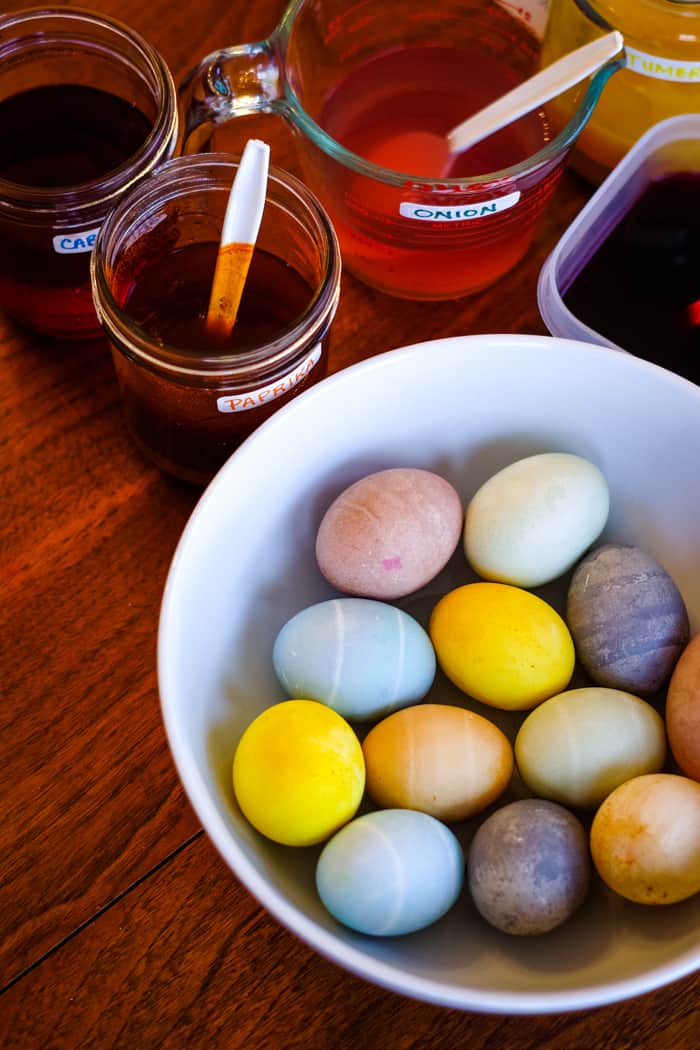
Colored eggs have been around for thousands of years. Even though we most often see the plastic version next to a large stuffed bunny, the origin of the Easter egg goes back to the early Christians of Mesopotamia. Eggs became a symbol of the tomb of Christ, a reminder that Jesus rose from the grave during His resurrection. Anyone else not realize Easter eggs were meant to be spiritual?!
Table of Contents
Naturally Dye Easter Eggs
The most commonly dyed color at that time was red in memory of the blood of Christ, but other colors like brown, gold and violet soon followed. Natural dye methods were obviously used. Boiled tree barks, floral leaves and even nut shells created a spectrum of hues. In 2016, we have even more options in our own refrigerators and cupboards to dye eggs the natural way. Most anything that will tint water will also tint an egg!
Want to save this recipe?
Enter your email & I'll send it to your inbox. Plus, get great new recipes from me every week!
What natural colors can you dye Easter Eggs?
Below you’ll find how to create six basic colors…
- Red – beet juice
- Orange – paprika spice
- Yellow – turmeric spice
- Green – red onions
- Blue – red cabbage
- Purple – grape juice
If you don’t have some of these ingredients and don’t want to buy them, experiment with others! I’ve heard frozen blueberries make a great deep blue. Green tea or boiled orange peels can make a faint yellow. Use your imagination! Aside from being fun, creating your own natural dye is also very economical. Natural dye kits can run between $10 – $20 and they are virtually the same thing as what I’m doing.
So go grab some eggs and come on in to my kitchen!
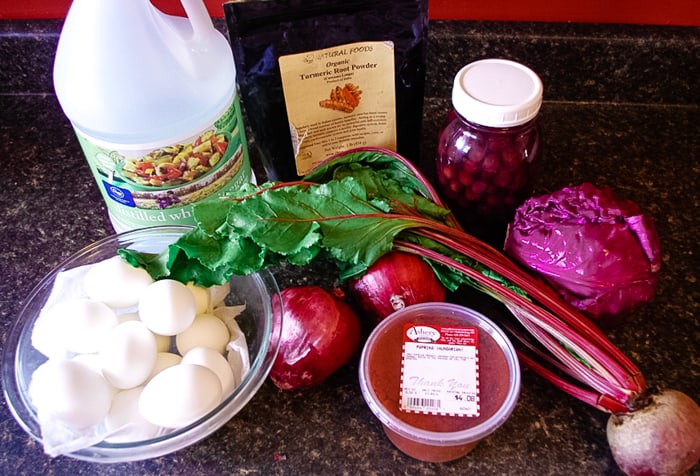
Here is a picture of the produce and spices that I am using to create my colors. You will also need some white vinegar and at least a dozen hard boiled white eggs.
Three of my colors require a little bit of prep work. The onion, cabbage and beets will need to be boiled to bring out their desired color.
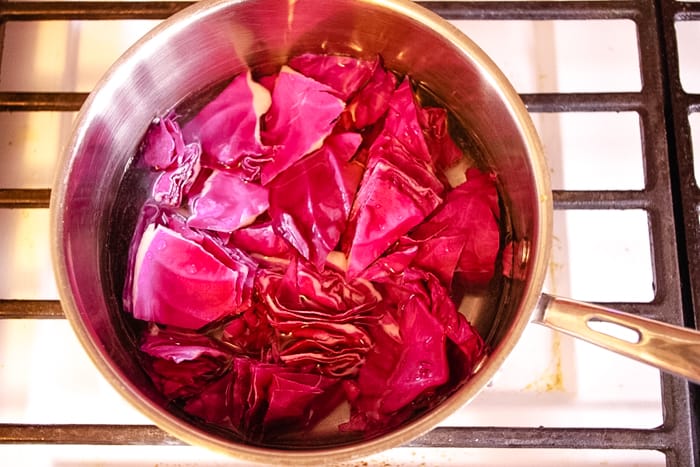
Naturally Dye Using Red Cabbage
Chop up a large chunk of red cabbage (about 1/4) and boil the pieces in 2 cups of water for 15 minutes. Bring the pot up to room temperature and strain out the pieces.
Red cabbage = blue colored eggs
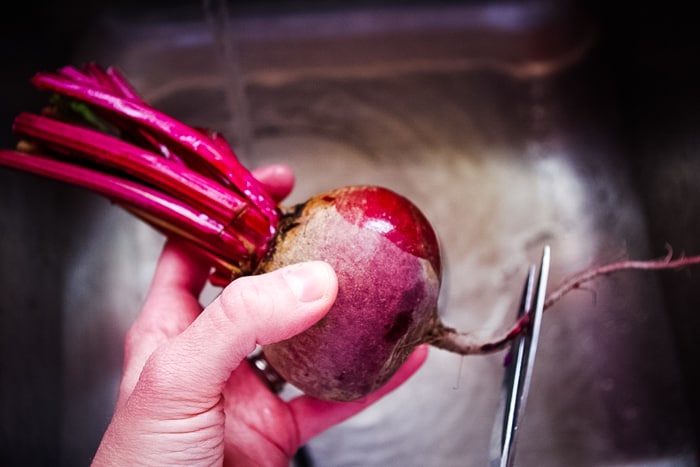
Naturally Dye Easter Eggs Using Beats
Here, I am showing you how to prepare the beet. Cut off most of the beet greenery and any long vines on the end. Rinse the beet well and slice in half. Just like the cabbage, boil the beet in 2 cups of water for 15 minutes. Bring to room temperature and strain out the beet halves.
Beets = red colored eggs
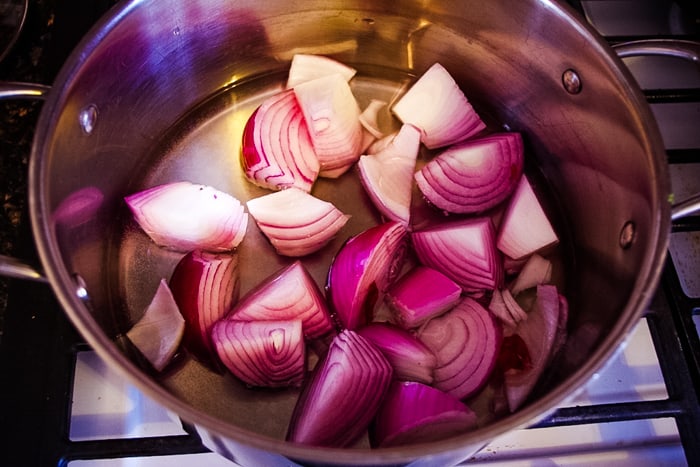
Naturally Dye Easter Eggs Using Red Onions
I always have red onions on hand, do you? Chop up 3 red onions and boil them as well in 2 cups of water. I have to say, boiled red onions do not smell the greatest, but when you see how they bring color to your eggs, it’s totally worth it.
Red onions = green eggs
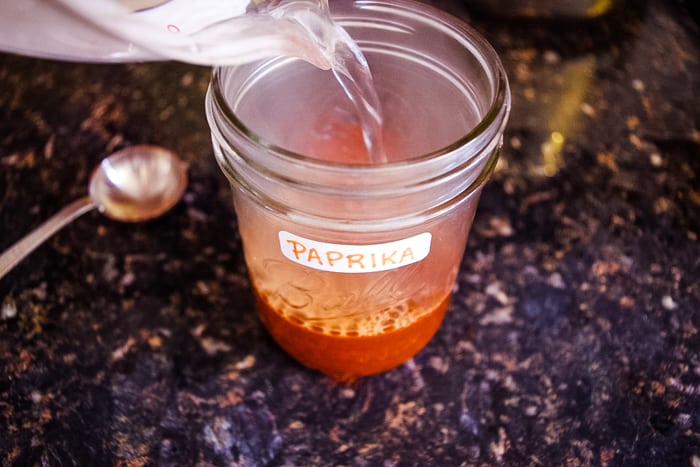
Naturally Dye Easter Eggs Using Paprika and Turmeric
The last three colors are fairly straightforward. Both the paprika and turmeric spices need only boiled water. Use 1 Tablespoon spice for every 1 cup of boiled water. Stir well and bring to room temperature. The grape juice can come directly from the bottle, or if like mine, strain out the grapes and use the juice.
Paprika spice – orange eggs
Turmeric spice = yellow eggs
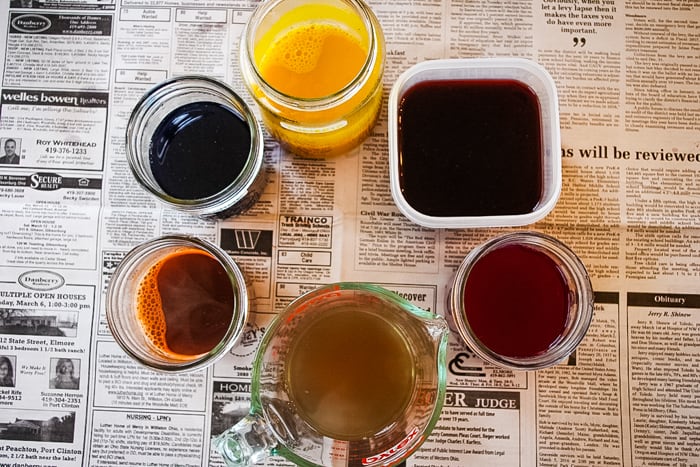
Would you look at that? A rainbow of natural dyes! With the exception of the onion, we can already visualize how they will color an egg.
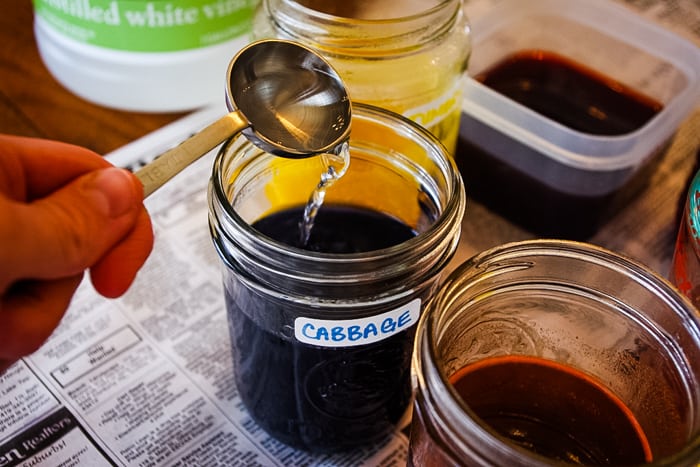
How To Prepare Natural Dyes For Eggs
Before you add your hard boiled eggs, add 1 Tablespoon of distilled white vinegar to each container of dye. There is probably a very long chemical explanation for this, but to keep it simple, vinegar adds acidity, which aids in the absorption of color.
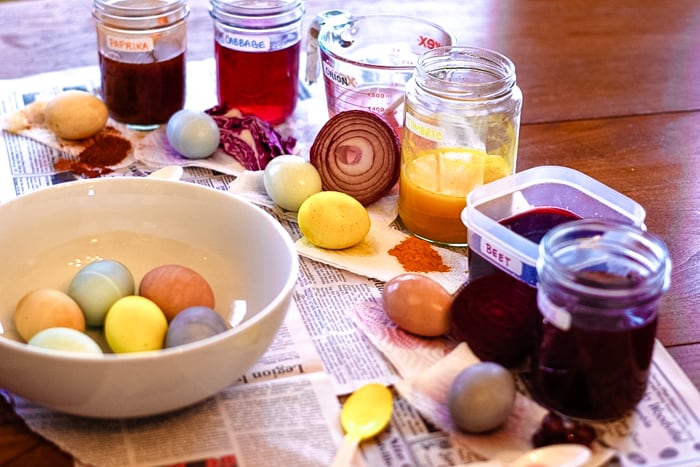
How Long To Soak Naturally Dyed Eggs
The longer you let the egg sit in the dye, the more vibrant the color. I had mine soaking for about 10 minutes and rotated them a few times. Keep in mind that natural dyes will not create as bright of color as commercial dyes because…ah, well… their natural! Sorry, but nothing in nature is neon green 🙂 However, if you really want a bold color, leave the eggs to soak overnight.
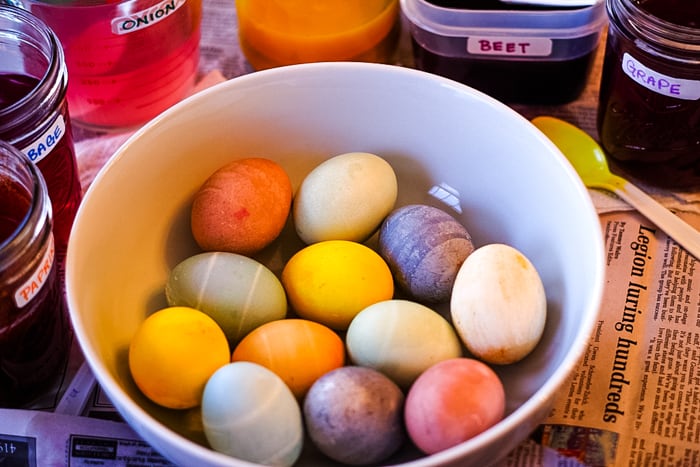
My family really loves coloring eggs using sources from creation – the natural way. What a great way to use our time and learn more about the meaning behind the season. The best part? You will have plenty of dye left over to invite in the neighbor kids and do it again. They will LOVE it.
Happy Easter!
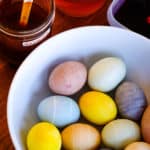
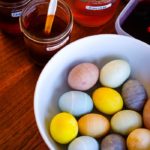





Leave A Reply!